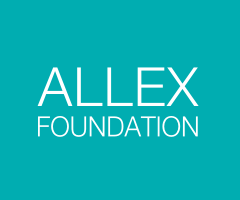Hobart and William Smith College (A)
This article is reposted from the Hobart and William Smith Colleges Office of Communications.
Unscrambling Mandarin Chinese sentences into correct ones is not necessarily an early afternoon brainteaser many students would call a good time. But the eight HWS students working in pairs in teaching Associate Yi-Tung Wu’s Beginning Chinese 101 language lab this semester, were fully engaged in the exercise, and enjoying the challenge.
Not surprising.
Their Taiwanese teaching associate — who like her predecessor last year is at the Colleges because of an award from the Alliance for Language Learning and Educational Exchange (ALLEX) — not only loves her native language, but wants the students she works with to love it as well.
Wu earned her master’s degree from the University of Kansas in education, focusing on teaching English as a second language and has taught English at various capacities in Taiwan. Before coming to HWS, she participated in ALLEX’s intensive, seven-week training program at Ohio State University that taught her the intricacies of teaching Mandarin Chinese to native English speakers.
Speaking from Taiwan, where he recruits top notch language instructors like Wu, ALLEX executive director Tom Mason said providing instructors who are able to effectively teach their native language is key in fulfilling ALLEX’s goal of enhancing high-quality, college level Chinese and Japanese language programs.
That’s reassuring to someone like Jonathan Bernbaum ’10, one of Wu’s students who previously took a stab at learning Chinese in boarding school and wasn’t very comfortable with it.
“It’s so much better learning it here,” he said, noting he finds the instructional pace much more comfortable in his Beginning Chinese 101 class made up of mostly American students. “We have a great teaching staff.”
Bernd Kroell ’10, a German native who transferred this year from the University of Cologne, and who is pursuing a dual major in economics and Asian studies, is also quite impressed with the Asian Language and Cultures Department, its Chinese program and the required, two-hour language labs with Wu each week.
“The lab is amazing. It’s challenging,” he said. “You have a chance to participate. I like coming here. As you can see, it’s a lot of fun,” he said.
And it’s instruction like Wu’s that makes it fun. Her teaching methods are appropriately animated and upbeat, punctuated with praise and encouragement as indicated. It’s clear she’s created an atmosphere highly conducive to learning and invites student participation.
Each of the nearly 50 HWS students studying Chinese at the beginning, intermediate or advanced level is required to take three class hours with either Professor Chi-Chiang Huang or Assistant Professor Jinghao Zhou and the two labs with Wu in which she works with students on vocabulary, sentence structure and reinforcing what they learn in class.
Though not required, she attends the nine classes each week that Huang or Zhou teaches so that she can stay on top of what students are learning and tailors her instruction to provide additional help where she sees a need. Students are also encouraged to come to her office if they need additional help.
In one class this semester, the teaching associate listened intently as the pairs of students deciphered the intricate Chinese characters and words, and formed sentences. As different students took turns suggesting the right answer, Wu, nodded affirmingly when the responses were correct, repeating them and emphasizing the proper pronunciation of words if mispronounced. Then she had all the students repeat them.
When someone gave an incorrect answer, she would try to get him or her to come up with the correct one.
Huang, also the Chinese Program chair, said he is grateful to have another capable teaching associate through the ALLEX program again this year.
“Yi-Tung is doing great,” he said and praised the well-trained teaching associates that go through rigorous training and preparation before getting to HWS.
ALLEX places between 40 and 50 Chinese and Japanese instructors in American universities each year with only a few of them going to smaller, private liberal arts colleges. The Colleges compete for them through a highly competitive process.
“I really love working here,” raved Wu. “I really enjoy working with my students.”
